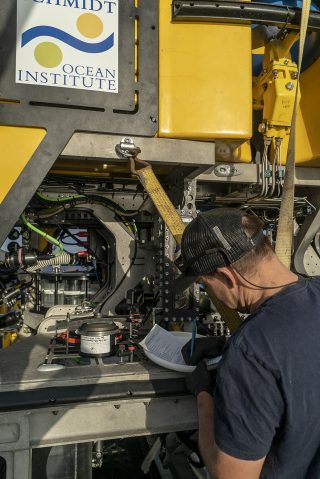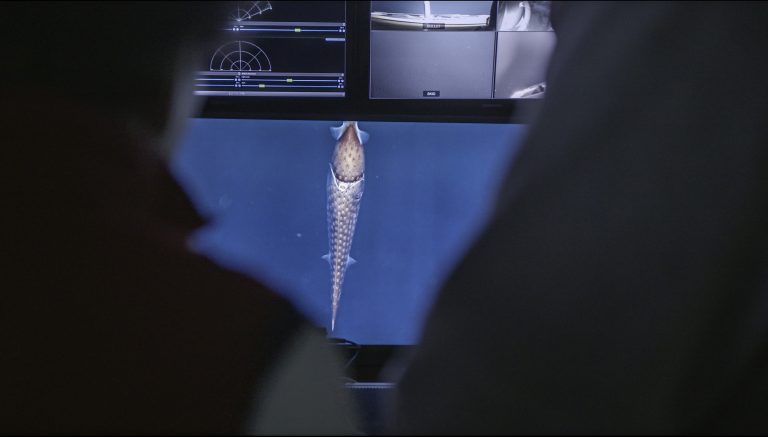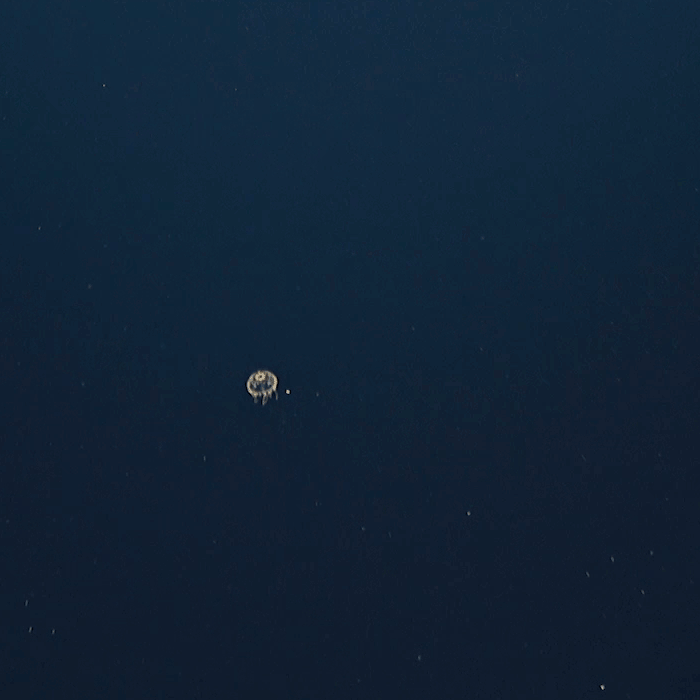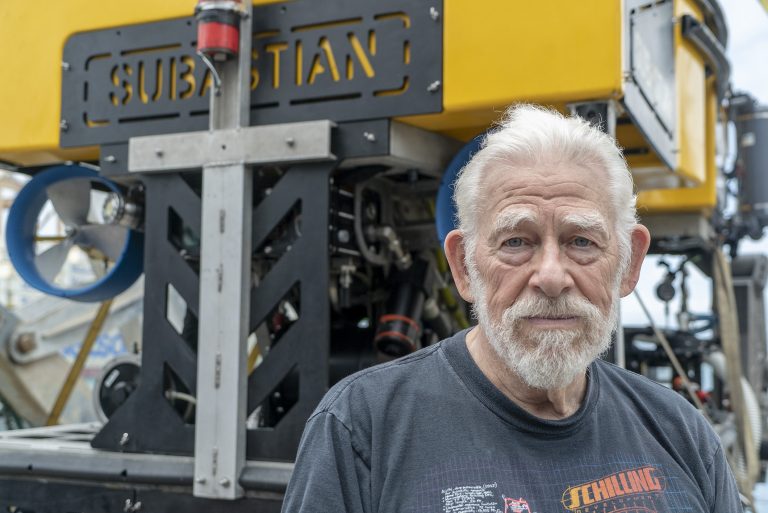It is 0730 and the water is calm in the Café. The Baited Remote Underwater Cameras have been deployed, and it is now time for ROV SuBastian to hit the water. This is SuBastian’s 110th dive and the deployment goes smoothly. In front of the control room screens, Dr. Bruce Robison gets ready for seven hours of scanning the midwater kingdom. A pioneer in using underwater vehicles to the study of the deep ocean, he is happy to leave the transit days behind him and get to work.
“Midwater is everything between the surface of the ocean and the deep seafloor below – that enormous water column that on a global average is 4000 meters deep,” explains Dr. Robison. “It is the largest living space on earth. It is also the home to the largest animal communities on Earth.” Since it is so inaccessible and challenging to study, the midwater is the least known of the this planet’s major habitats.

Let Us Go and See
The fundamental question driving the White Shark Voyage expedition is: why do white sharks come out to this remote part of the ocean and stay here for a great part of their annual cycle? One of the ways in which the resident scientists are trying to answer that question is by thoroughly characterizing this oceanic environment. The researchers are seeking to identify many different conditions in the water column, including temperature, oxygen, chlorophyll, and salinity. In addition, they are observing what kind of life exists here and what are the general patterns of ecology and organization in this enormous habitat might be.
To conduct such a detailed study, they have devised a variety of tools and approaches. “For me, there is no substitute for direct observation. I want to see what’s there. If I can’t go down myself, then the next best thing is to use a Remotely Operated Vehicle,” Dr. Robison says.
A Misnomer
Below the surface of the ocean – between 50 and 810 meters of depth – Dr. Robison has encountered many familiar faces, but also some new ones. To him, the amount of life was larger than expected and he is particularly pleased to observe how stratified the different species seemed to be, which in most cases corresponded with the echo sounder’s readings and low dissolved oxygen sections of the water column.

 Today, the team is one step closer to understanding – in general terms – how the world works. The migration of white sharks to the café is one of many moving parts that affect the Earth. With more knowledge, the team hopes better management will follow. “Fundamentally, we are trying to solve a puzzle that is part of a larger puzzle which explains how the world works. And the fact that one of the top predators in the ocean spends a considerable amount of its annual cycle here, in what is essentially the middle of nowhere, seems to me a worthy question to try to understand,” says Dr. Robison.
Today, the team is one step closer to understanding – in general terms – how the world works. The migration of white sharks to the café is one of many moving parts that affect the Earth. With more knowledge, the team hopes better management will follow. “Fundamentally, we are trying to solve a puzzle that is part of a larger puzzle which explains how the world works. And the fact that one of the top predators in the ocean spends a considerable amount of its annual cycle here, in what is essentially the middle of nowhere, seems to me a worthy question to try to understand,” says Dr. Robison.
The dive has been long, and for moments it appeared as if the team was destined to watch only shades of blue while SuBastian explored the gigantic mass of water. Nevertheless, Dr. Robison feels invigorated by the experience. “It is a misnomer to call this place a desert!” he says, as the crew recovers SuBastian and returns it to the safety of Falkor’s aft deck. “This was a lot of fun. Even in just one dive, we have gathered great deal of knowledge because no one has dived here before.”


